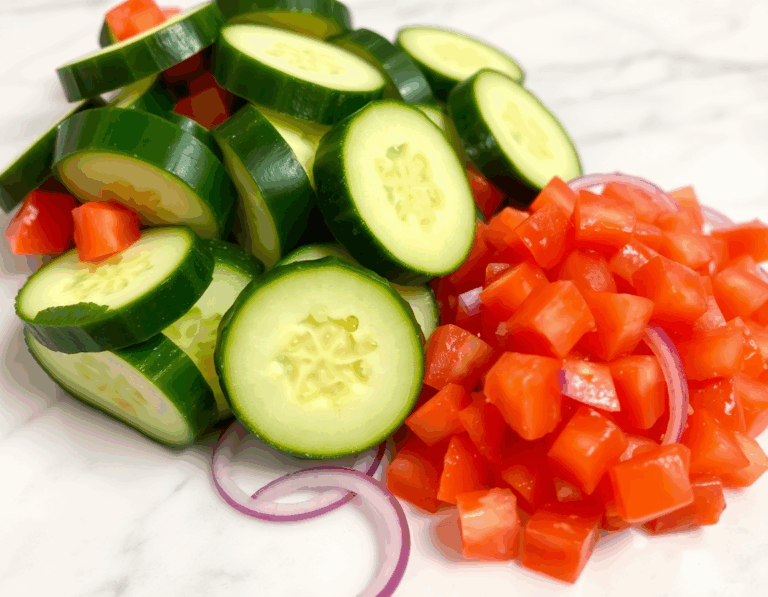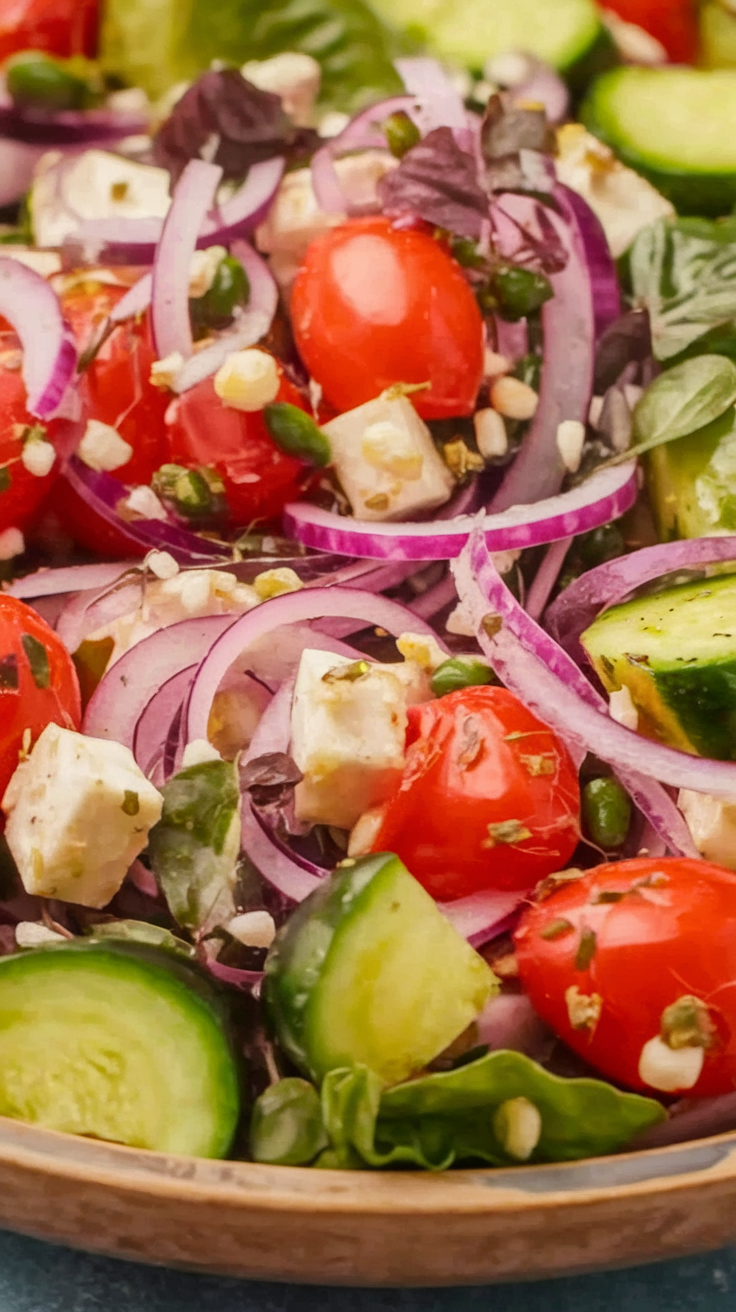Oh, the Mediterranean diet—it’s like a sun-soaked vacation for your taste buds without leaving your kitchen. You know, I used to believe chickpeas were just for hummus, but then I stumbled upon this salad, vibrant and bursting with flavors like a summer festival. Imagine the zesty tang of lemon mingling with fresh herbs, and you have a dish that’s both earthy and refreshing, a paradox on a plate.
Steps
- Begin by chopping the vegetables: slice the cucumber into half-inch half moons, dice the Roma tomatoes into similar-sized pieces, and thinly slice the red onion.
- Add the halved kalamata olives and cubed feta cheese to the chopped vegetables in a large bowl.
- Prepare the dressing directly in the bowl by adding olive oil, red wine vinegar, Greek oregano, salt, and a dash of freshly ground black pepper.
- Thoroughly toss the salad to ensure the dressing is evenly distributed, then serve immediately for the best texture and flavor.

Ingredients
- 1 English cucumber, cut into 1/2-inch half moons
- 4 Roma tomatoes, halved and then cut into 1/2-inch pieces
- 1/2 red onion, thinly sliced
- 1 cup kalamata olives, pitted and halved
- 4 ounces feta cheese, cut into 1/2-inch cubes
- 2 tablespoons olive oil
- 2 tablespoons red wine vinegar
- 1 teaspoon Greek oregano
- 1/2 teaspoon kosher salt
- Dash of freshly ground black pepper
Nutritional Values
Calories: 500kcal | Carbohydrates: 24g | Protein: 16g | Fat: 40g | Saturated Fat: 8g | Monounsaturated Fat: 8g | Cholesterol: 32mg | Sodium: 984mg | Potassium: 540mg | Fiber: 4g | Sugar: 8g
FAQ
- Is Mediterranean Salad considered healthy?
- The healthiness of Mediterranean Salad can vary based on individual dietary needs. However, it aligns with the principles of the Mediterranean diet, which emphasizes vegetables, healthy fats, and moderation.
- Can Mediterranean Salad fit into a Keto diet?
- Yes, the salad as prepared in the recipe is Keto-friendly, provided you omit the chickpeas.
- What type of dressing is traditionally used for Mediterranean Salad?
- A traditional Mediterranean salad dressing consists of red wine vinegar, olive oil, Greek oregano, salt, and pepper. This simple combination is what is used in the recipe.
- How should leftover Mediterranean Salad be stored?
- Leftovers should be stored in an airtight container in the refrigerator for up to three days. Keep in mind that the vegetables may soften over time.
- What are some variations of Mediterranean Salad?
- You can transform the salad into a Mediterranean pasta salad by adding bow tie pasta, a chickpea salad by including garbanzo beans, or a quinoa salad by mixing in cooked quinoa. Adjust the dressing as needed for these variations.
Tips
- Chop Vegetables Uniformly: To ensure even distribution of flavors and a consistent texture, make sure to chop the cucumbers and tomatoes into uniform 1/2 inch pieces and slice the onions thinly.
- Use Block Feta for Visual Appeal: While you can use crumbled feta, opting for a block of feta cheese cut into cubes can make the salad look more visually appealing.
- Double the Dressing for Variations: If you decide to add pasta, chickpeas, or quinoa to transform this salad into a full meal, consider doubling the dressing to ensure all ingredients are well-coated and flavorful.
- Store Properly for Freshness: If you have leftovers, store them in an airtight container in the refrigerator for up to three days. Keep in mind that the texture of the vegetables may soften over time, which could alter the salad’s crunchiness.
Equipment
- Large Mixing Bowl – For combining and tossing the salad ingredients.
- Chef’s Knife – For chopping the vegetables and feta cheese.
- Cutting Board – For preparing and chopping the vegetables.

